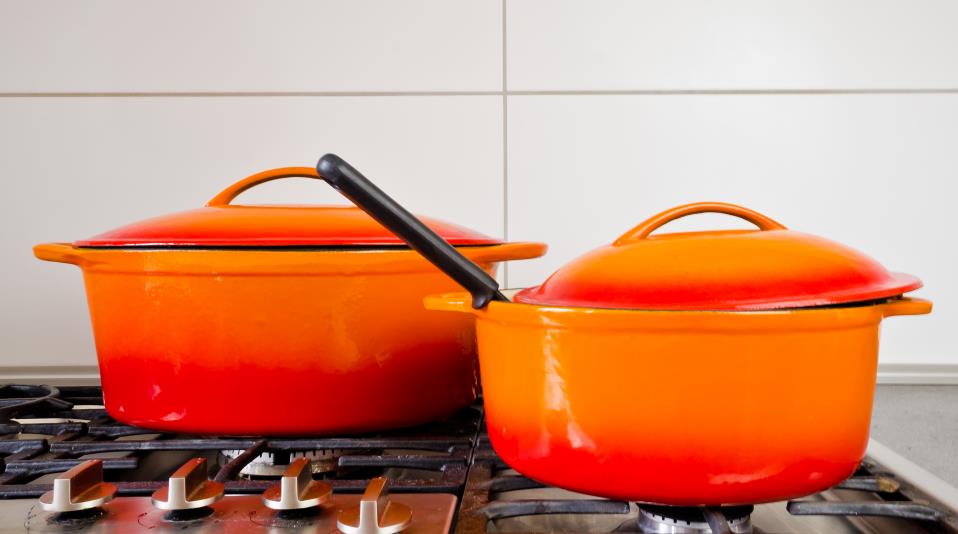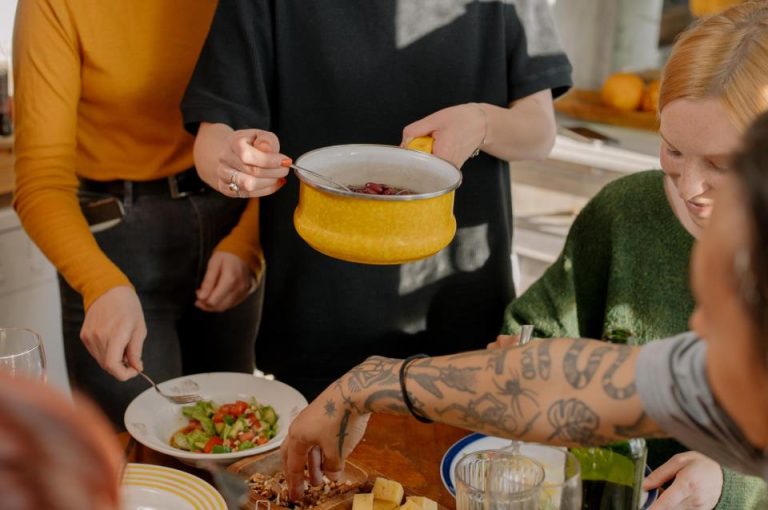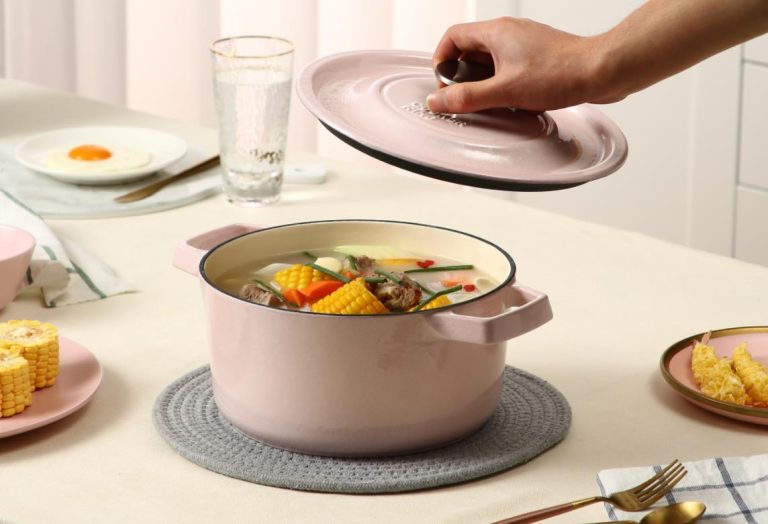Chefs that love cooking with cast iron, but dislike the seasoning process often turn to enameled cast iron cookware. It makes sense. Enameled cast iron is a convenient material in many ways, with its partially non-stick surface that doesn’t require seasoning or rust.
Yet, many users have trouble properly caring for their enameled cast iron pots and pans, particularly Dutch ovens. Caring for enameled cast iron cookware is simple, but with its dos and don’ts one should follow.
In this article, we’ll go over how to properly take care of enameled cast iron cookware. Inform your customers following these to help their purchases last longer. Read to the end to discover tips for maintaining enameled cast iron, from cleaning to storing.
What is enameled cast iron?
Enameled cast iron, as the name suggests, is a version of cast iron cookware with an enamel coating around it. This vitreous coat is similar to ceramic.
The coating is a type of melted glass that seals the bare cast iron. The enamel coating works similarly to seasoning. It creates a barrier around the cast iron. The difference is it doesn’t come off, making it cookware seasoned for life in a way.
However, the enamel coating changes the cast iron’s attributes slightly. All shop owners should know what enameled cast iron is to inform their customers for better purchases.
Buy Wholesale Cookware and Start Scaling up with Us Today
Contact us and connect with a sales rep to get a free quote.
How to clean enameled cast iron cookware?
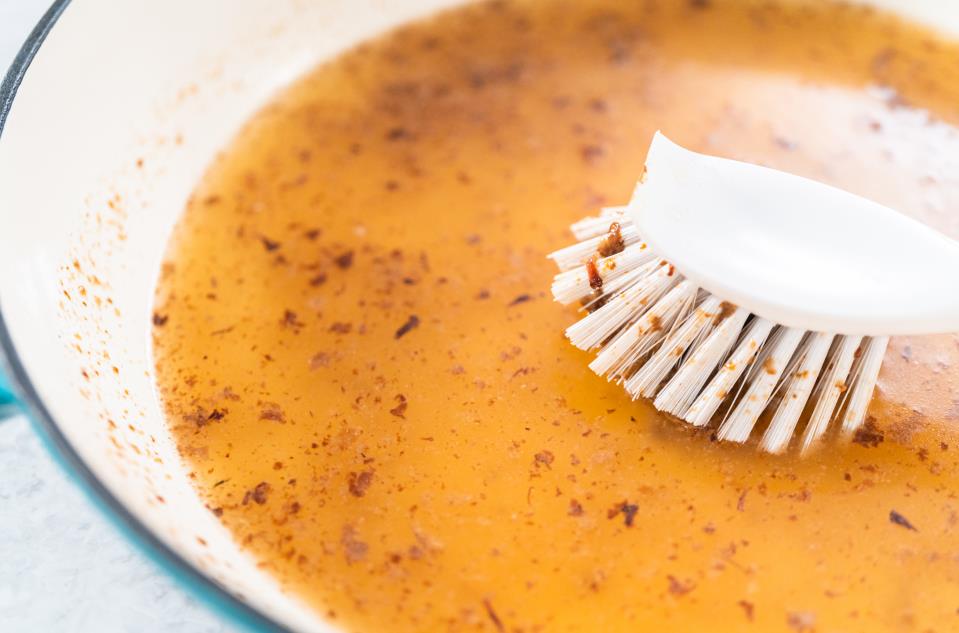
The enamel coat isn’t the same as the seasoning on cast iron skillets. Users don’t need to clean it the same as bare cast iron. Cleaning enameled cast iron cookware as if it is stainless steel or non-stick won’t damage the surface.
Unlike bare cast iron, users can leave enameled cast iron to soak. Doing this gives cooks an easier time cleaning an enameled cast iron pot or pan. Soaking won’t rust or oxidize since the coating completely covers the cast iron.
Since water can’t penetrate the surface, enameled cast iron pots and pans are regarded as dishwasher safe. However, it isn’t the best way to clean them. Dishwashers can get bumpy, and other items can rub against the enamel coat. This can scrape the coating or chip it.
It is best to clean them by hand using warm soapy water. Here is a step-by-step guide on cleaning enameled cast iron pots and pans.
Before cleaning enameled cast iron cookware, allow it to cool. Cast iron doesn’t have the best thermal shock resistance. Sudden changes in the temperature can lead to warping or cracks. Running cold water over any hot pan isn’t a good idea, regardless of the material.
Here is a step-by-step guide on how to clean a piece of enameled cast iron cookware.
- Once the cookware is cool, leave it to soak in warm water for about 10 minutes. This makes removing stains from enameled cast iron before scrubbing effortless.
- Remove the food residue with a silicon spatula or paper towel and run it under water for a few seconds.
- Using soapy water and a nylon brush, scrub the surface. Switch to a harder brush or sponge if the stains aren’t coming off. However, pay attention to using these gently in circular motions.
- Finally, rinse thoroughly with warm water and leave it to dry.
Cleaning enameled cast iron cookware should be as simple as that. It doesn’t have to be dried immediately after cleaning or seasoned before putting it away.
Alternatively, you can boil it with baking soda if the stains are too strong to come off. Make sure all the food stains are covered with water and add a generous amount of baking soda. Stains should disappear in a minute or two over medium-high heat.
Care tips for enameled cast iron
- Use soft utensils: Metal utensils can scratch and chip the enamel surface. Wood and silicon utensils are much gentler on the surface and safer to stir and flip food.
- Hand-wash: Cleaning an enameled cast iron pot or pan in the dishwasher a few times won’t damage it immediately, but it isn’t advisable. Over time, the coating can get damaged due to harsh chemicals and hot water. It’s best to leave the dishwasher for utensils and plates.
- Don’t skip the oil: Cooking oil shouldn’t be skipped despite the somewhat non-stick surface of the enameled cast iron. It will provide a better cooking experience and become easier to clean.
- Don’t preheat empty: Preheating enameled cast iron cookware without anything can lead to cracks. Using water or oil is recommended if the recipe calls for preheated cookware.
- Avoid high heat: Lastly, enameled cast iron doesn’t take high heat lightly. It cooks best over low to medium-high heat. That’s why enameled cast iron Dutch ovens are renowned for their ability to cook stews and braise.
Storing enameled cast iron cookware
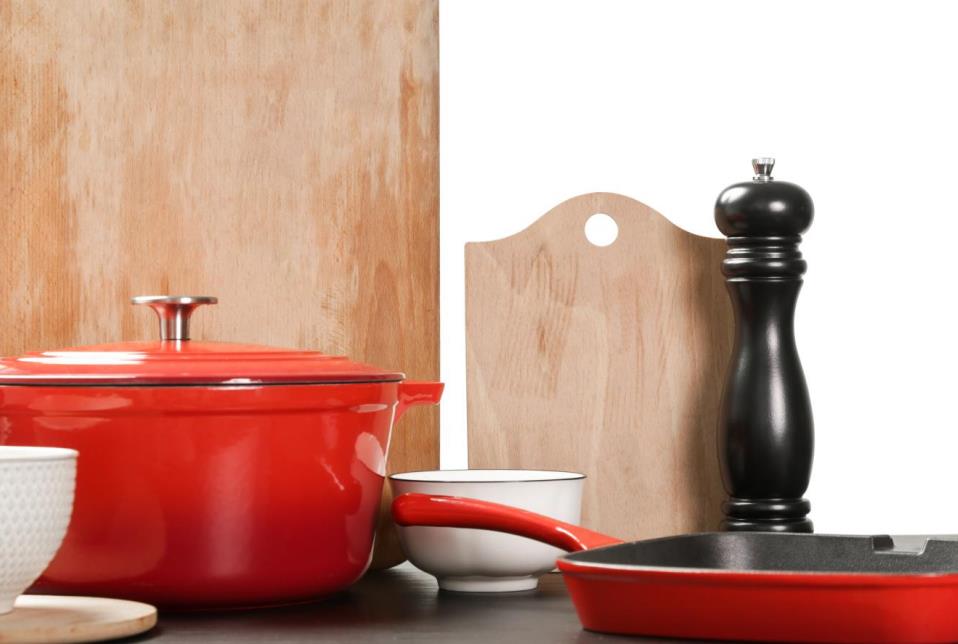
While cleaning enameled cast iron cookware doesn’t take anything special, storing does. It isn’t like stainless steel or cast iron pans that are pure metal – it is but only on the inside.
The enamel coat that surrounds the bare cast iron is quite fragile. Chipping is inevitable if the enamel coating rubs to metal repeatedly. Enameled cast iron cookware shouldn’t be stacked on top of each other. While storing, the enameled cast iron pots, pans, and Dutch ovens can rub each other and result in chips.
The safest way to store enameled cast iron cookware is to leave them individually. Keeping them this way takes lots of space, but it is the safest method to ensure they won’t get damaged. To save storage space, flipping the lids upside down works like magic.
The storage location should also be resistant to weight since enameled cast iron cookware is quite heavy. It is also advisable to keep enameled cast iron pots and pans on the lower parts of the cabinet for easier access.
Lastly, cooks should give time to enameled cast iron cookware if storing cookware in a particularly hot or cold place. Considering the thermal shock resistance of cast iron, putting it over the stovetop right from the storage location is a recipe for a cracked piece of cookware.
Should you sell enameled cast iron pots and pans?
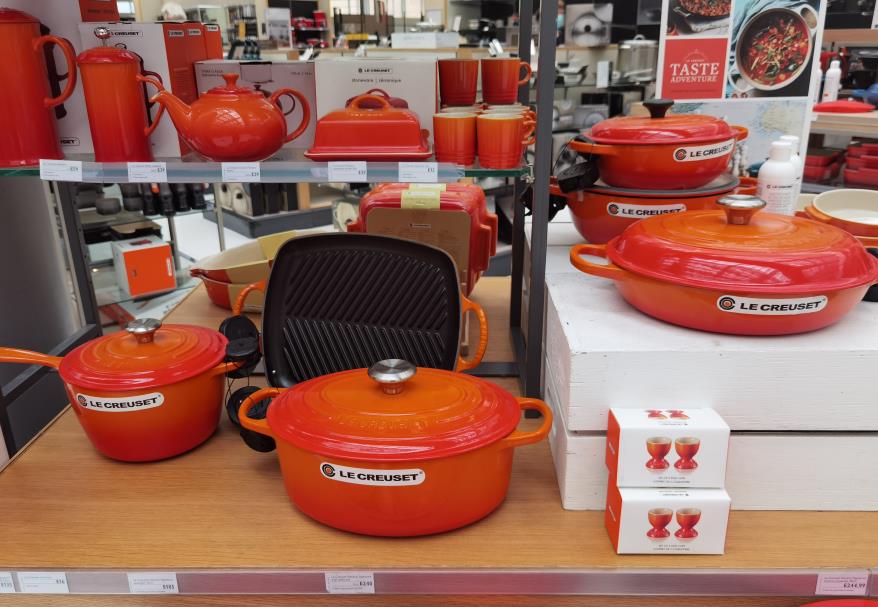
Enameled cast iron pots and pans are advantageous to many cooks. They are easy to clean, maintain, and use. In a way, they function the same as non-stick cookware but with the added superior qualities of cast iron.
Adding enameled cast iron won’t make your store lose anything. Quite the contrary, it will increase sales as it is one of the most preferred cookware choices. Home cooks and professionals alike favor the convenient nature of enameled cast iron cookware. Enameled cast iron pros almost always outweigh the cons for most users.
Selling enameled cast iron products is a must for any shop with a selection of cookware – whether small or big.
Buy Wholesale Cookware and Start Scaling up with Us Today
Contact us and connect with a sales rep to get a free quote.
Source cookware from LeeKnives
We are a kitchen knife manufacturer based in Yangjiang City, China. We don’t manufacture cookware, but our connections in the industry can help your store. LeeKnives can put you in contact with the best cookware manufacturers in the Guangdong region.
We can work as an intermediary between you and the manufacturer. Let us handle the bureaucracy that comes with sourcing products from abroad. Request a quote today!
